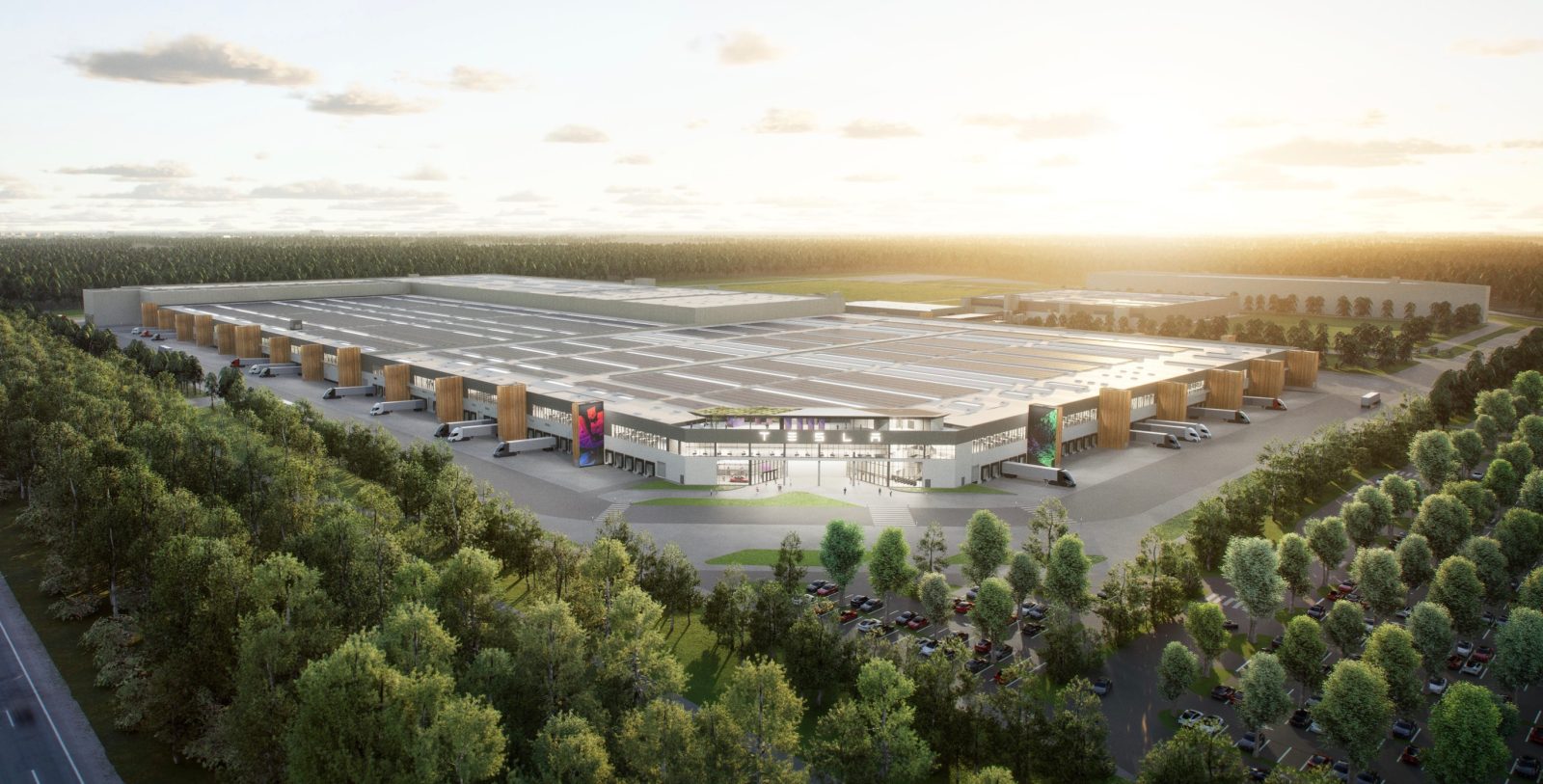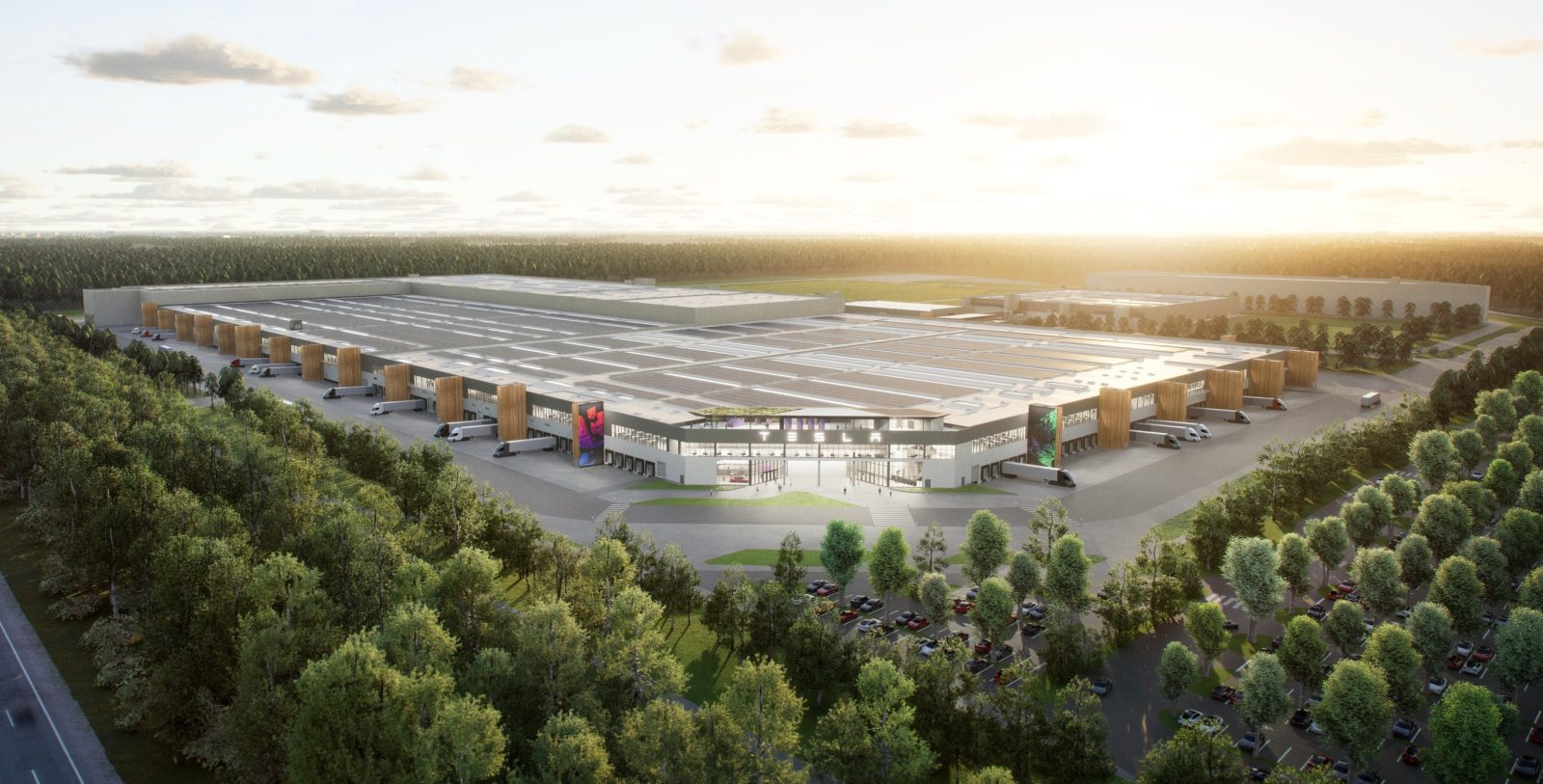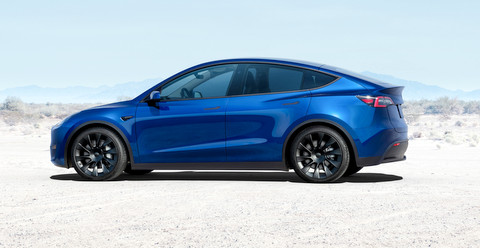The Tesla Model Y and Model 3 have the most loan queries made on LendingTree’s platform.
Source: Electric Vehicle News
BMW starts making fuel-cell stacks for iX5 Hydrogen
 BMW has started manufacturing fuel-cell stacks for its iX5 Hydrogen SUV, which is expected to start low-volume production before the end of the year. First seen at the 2019 Frankfurt Motor Show as the i Hydrogen Next, the iX5 Hydrogen is essentially a BMW X5 crossover SUV that swaps out the internal-combustion engine with a fuel-cell stack that…
BMW has started manufacturing fuel-cell stacks for its iX5 Hydrogen SUV, which is expected to start low-volume production before the end of the year. First seen at the 2019 Frankfurt Motor Show as the i Hydrogen Next, the iX5 Hydrogen is essentially a BMW X5 crossover SUV that swaps out the internal-combustion engine with a fuel-cell stack that…
Source: Hybrid and Electric Car News and Reviews
Mercedes-Benz Reveals US Pricing For The EQS SUV
The MSRP starts at $104,400 and it’s expected to get 285-305 miles of EPA range.
Source: Electric Vehicle News
First Rivian R1S Pops Up For Sale Online Way Above Sticker Price
It’s listed on Cars and Bids and the current high bid is just over $120,000.
Source: Electric Vehicle News
Health Staff In Cornwall, England Are Using E-Bikes To Visit Patients
It turns out e-bikes provide a number of benefits not only to patients, but to healthcare workers, as well.
Source: Electric Vehicle News
American Battery Technology to expand labs at University of Nevada Reno
American Battery Technology Company (ABTC) is expanding its battery metals extraction and qualification laboratories within its Research Development Center, which is located at the Nevada Center for Applied Research (NCAR) at the University of Nevada Reno (UNR).
“ABTC’s Research Development Center team uniquely focuses on in-house, first-of-kind developed battery metals extraction technologies for both the recycling of spent batteries and for the manufacturing of primary battery metals from domestic-US based resources,” says ABTC.
The company says the plan includes a five-fold space expansion which will result in more than 3,000 square feet of total lab space.
“The abilities to independently manufacture battery cathode-grade lithium hydroxide, nickel, cobalt and manganese products from our recycling operations, to manufacture battery cathode-grade lithium hydroxide from our primary Nevada-based lithium-bearing sedimentary materials, and to be able to implement our own internally-developed analytical chemistry procedures to certify the quality of our specialty chemical products [will enable] accelerating the commercialization of our in-house developed processes,” says ABTC CEO Ryan Melsert. “With this expansion into our fifth laboratory within the NCAR at UNR, we can now perform all of these operations within a single facility, further accelerating our path forward.”
ABTC says the labs support its Tonopah Flats Lithium Exploration Project, a USABC project aimed at demonstrating battery metal product manufacturing and a lithium-ion battery recycling pilot plant under construction in Nevada.
Source: American Battery Technology Company
Source: Electric Vehicles Magazine
Global Plug-In Electric Car Sales Increased 61% In July 2022 To 778,000
That’s 14% of the global passenger car car market.
Source: Electric Vehicle News
Tesla looks to hire ‘high volume’ recruiters in Quebec as rumors of a factory ramp up

Tesla is looking to hire “high volume” recruiters to operate in Quebec, Canada, as rumors that the automaker is looking to establish a factory in the region are ramping up.
The post Tesla looks to hire ‘high volume’ recruiters in Quebec as rumors of a factory ramp up appeared first on Electrek.
Source: Charge Forward
Tesla is looking to hire ‘high volume’ recruiters in Quebec as rumors of a factory ramps up

Tesla is looking to hire ‘high volume’ recruiters to operate in Quebec, Canada, as rumors that the automaker is looking to establish a factory in the region are ramping up.
The post Tesla is looking to hire ‘high volume’ recruiters in Quebec as rumors of a factory ramps up appeared first on Electrek.
Source: Charge Forward
What EV Buyers Need to Know About the $7,500 EV Tax Credit
As Always, the Devil Is in the Details
The recently passed Inflation Reduction Act of 2022 has many significant implications for the country’s sustainability. One of the most intriguing of these changes for car buyers is a revamped electric vehicle (EV) tax credit. Here’s everything potential EV buyers need to know about it.
How Much Can You Get from the EV Tax Credit?
The new EV tax credit, like the one that preceded it, offers up to $7,500 for electric passenger cars and light trucks. However, not everyone who applies for it will receive the full $7,500.

From now until January 1, 2023, EV buyers will receive $2,500 for an EV with a battery capacity of at least 5 kilowatt-hours (kWh). They’ll get an additional $417 for every kWh over that minimum, capping at $7,500.
After January 1, 2023, the way these credits work will change. You’ll be able to get $3,750 for buying EVs with at least 40% of their battery’s minerals coming from or being recycled in the U.S. You’ll get the other half of the credit if the final assembly of at least 50% of the battery’s components happens in the U.S.
A tax credit also applies to used EVs. The new system offers either 30% of the vehicle’s value or $4,000, whichever is less.
These changes mean a higher minimum tax reward for EV buyers, though they also narrow the scope of which vehicles qualify for these credits. Buyers looking for more savings can make other sustainable purchases. For example, you can get up to $300 for installing efficient water heaters in your home.
How Do You Qualify for the EV Tax Credit?
For new cars, buyers’ modified adjusted gross income (MAGI) must be lower than or equal to $150,000 for individual filers. Married couples filing jointly can have incomes up to $300,000, and people filing as the head of a household must have a MAGI lower than $225,000.
Used EVs are slightly different, with a maximum MAGI for single taxpayers of $75,000. Joint filers’ maximum MAGI is $150,000, and heads of household’s MAGI must not exceed $112,500.
When Does the Tax Credit Go Into Effect?
It’s important to note that the EV tax credit’s requirements will change over time. The first change to take effect is the final assembly rule, which started on August 16, 2022. From then until January 1, 2023, EV credits will work mostly like they used to, but 50% of the battery’s components must come from the U.S.
On January 1, 2023, the new tax credit system and income restrictions take effect, as do the initial battery mineral and component regulations. However, these will change.
The required percentage for minerals coming from the U.S. will rise to 50% in 2024, then 60% in 2025, 70% in 2026 and 80% in 2027. Similarly, the components whose final assembly must happen in the U.S. will rise to 60% in 2024, 70% in 2026, 80% in 2027, 90% in 2028 and 100% in 2029.
What Cars Are Eligible for the Tax Credit?

With 65% of the global cobalt supply coming from the Democratic Republic of the Congo, many EVs today don’t meet the new standards. Vehicles will also lose eligibility when at least 200,000 of them sell in the U.S. The Department of Energy has a tentative list of qualifying vehicles you can use to see if the car you want is eligible.
[Ed note: GM and Tesla have already hit the manufacturer sales cap so their models are off the incentive list. Plug-in hybrids (PHEVs) are eligible and make up a good portion of the list). Full electrics on the current list include three Fords (F-150 Lightning, Mustang Mach-E, E-Transit), Lucid Air, Nissan Leaf, three Rivians (EDV, R1S, R1T) and the Mercedes EQS SUV that just started production in Alabama.]
New Tax Credits Could Spur American EV Production
These new regulations encourage automakers to make more EVs in the U.S. As more people take advantage of these tax credits, U.S. EV production could surge. Drivers looking to buy these vehicles may also get higher rewards, helping transportation go green.
Make sure to opt-in to the Clean Fleet Report newsletter (top right of page) to be notified of all new stories and vehicle reviews.
Clean Fleet Report tests of eligible vehicles:
Flash Drive: Ford F-150 Lightning
Road Test: Ford Mustang Mach-E GT
Road Test: Ford Mustang Mach-E
Flash Drive: Lucid Air Dream Edition
Road Trip: Nissan Leaf
The post What EV Buyers Need to Know About the $7,500 EV Tax Credit first appeared on Clean Fleet Report.
Source: Electric, Hybrid, Clean Diesel & High-MPG Vehicles


